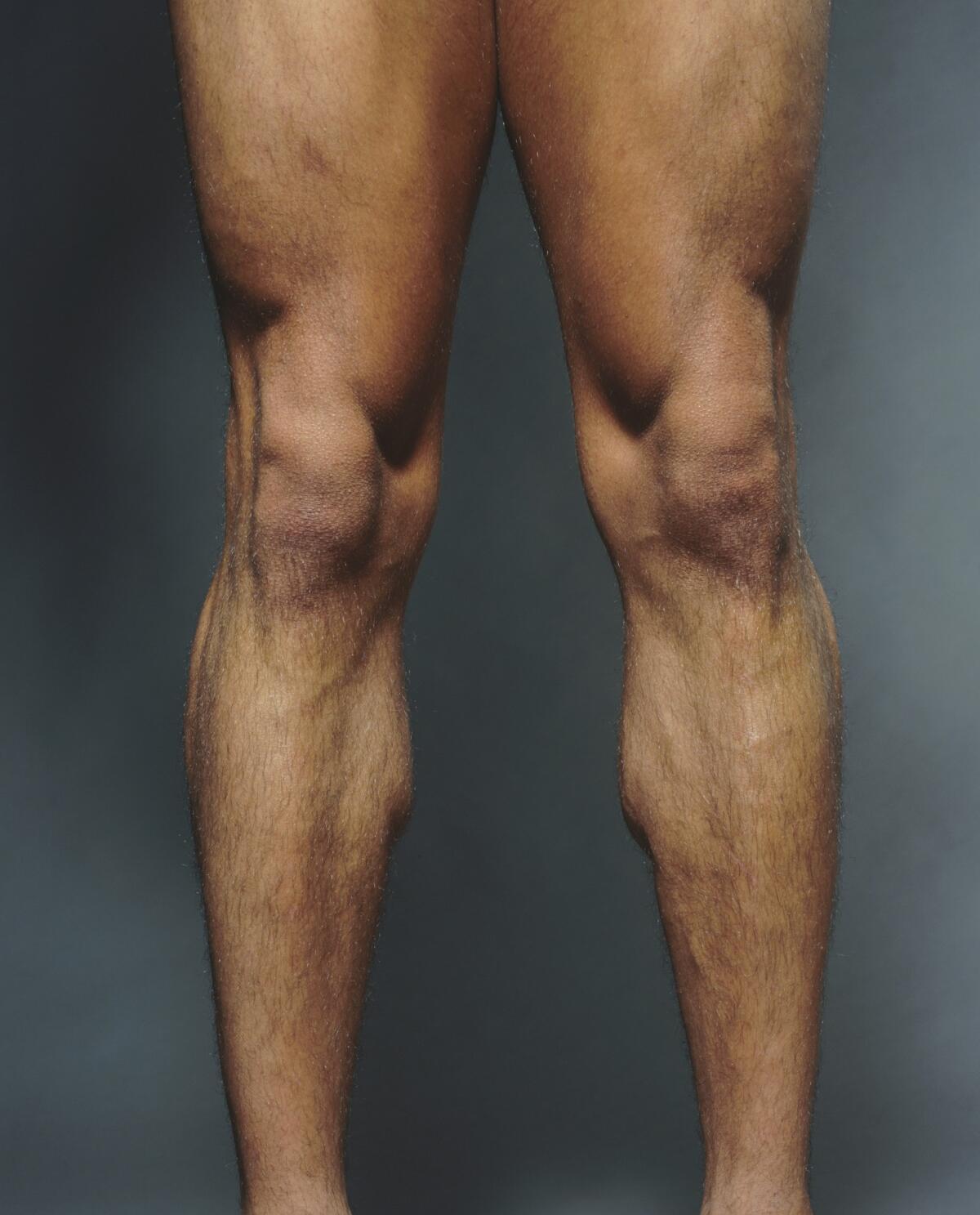Glucosamine: No cure for knee pain or deterioration, study says

- Share via
A daily glucosamine drink supplement failed to prevent deterioration of knee cartilage, reduce bone bruises or ease knee pain, according to a recent short-term study of the popular, if controversial, dietary product.
In a paper published Tuesday in the journal Arthritis & Rheumatology, authors studied the effects of glucosamine hydrochloride on a group of 201 adults for six months.
“Our study found no evidence that drinking glucosamine supplement reduced knee cartilage damage, relieved pain or improved function in individuals with chronic knee pain,” said the study’s lead author, Dr. C. Kent Kwoh, professor of medicine and medical imaging at the University of Arizona College of Medicine.
“We looked at multiple different ways that glucosamine might help,” said Kwoh, who also directs the University of Arizona Arthritis Center. “None of them showed any benefit.”
Glucosamine occurs naturally in humans and other animals, and helps to build cartilage, the tissue that cushions bones.
Supplemental glucosamine is commonly made from the shells of sea creatures, and marketers claim that it promotes joint health and supports the formation of cartilage. Roughly 10% of the U.S. population uses the supplement, study authors said.
Yet despite its popularity, glucosamine’s effectiveness remains a topic of debate.
In European studies, where glucosamine requires a physician’s prescription, manufacturer-funded studies have argued that the substance is beneficial.
In the United States, however -- where the product can be purchased over-the-counter -- some studies have failed to find it effective in slowing the progression of knee osteoarthritis.
In the most recent study, Kwoh and his colleagues tested glucosamine’s effects on adults between 35 and 65 who complained of knee pain.
Roughly half of the study patients, 98, were given daily, 1,500 mg doses of glucosamine hydrochloride in a 16-ounce lemonade drink. The other half, 103, were given lemonade drinks that did not contain the supplement.
The study subjects were given MRIs at the start of the trial and at the final 24-week examination. Test subjects also reported on their knee pain and provided urine samples.
The urine was tested for levels of C-terminal cross-linking telopeptide of type II collagen (CTX-II), a molecular marker for cartilage tissue degradation.
The MRI images, pain assessments and urinalysis provided no evidence that glucoasime was more effective than the placebo in improving joint health, authors concluded.
Glucosamine is commonly sold in two forms: Glucosamine hydrochloride and glucosamine sulfate. While some have argued that the two forms of glucosamine might effect joints differently, Kwoh said pharmacological studies have found no difference between the them.
The study was funded by the the Coca-Cola Co.’s Beverage Institute for Health & Wellness.
The soft-drink company temporarily marketed orange juice containing glucosamine -- under its Minute Maid brand -- but no longer does.
“I’m not sure they’re going to market it again, because of this and other studies,” Kwoh said.
Study authors said theirs was the first to use MRIs to evaluate glucosamine’s effects on cartilage and bone marrow lesions.
Previous studies have used X-rays, which show bones, but not cartilage. Doctors therefore judge how healthy the invisible cartilage is by measuring how far apart the bones of the knee are. Larger distances suggest more cartilage.
With MRI technology, Kwoh said he and his colleagues were able to examine the cartilage more directly.




